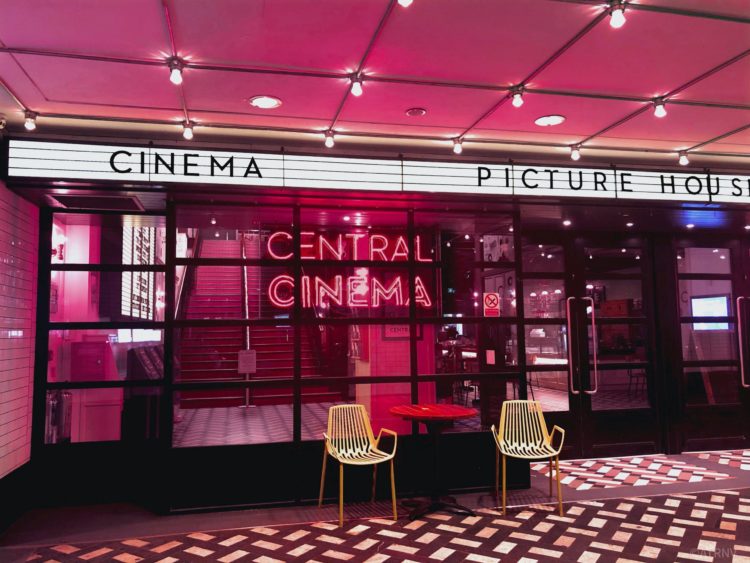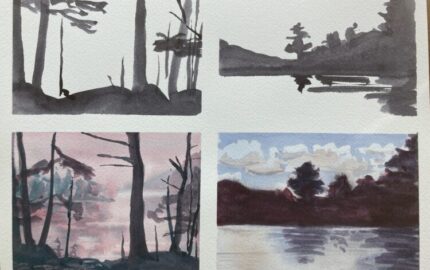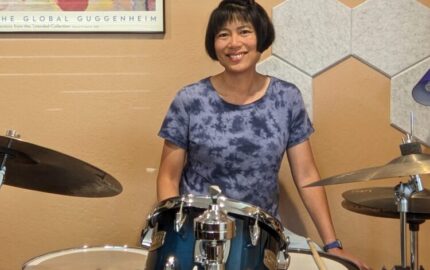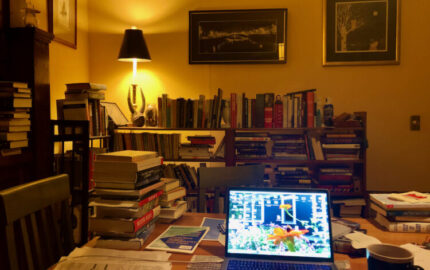I’ve been struggling to find the right term for the nonfiction writing I most admire. Whether written by Joan Didion, David Grann, Susan Orlean, Héctor Tobar, Isabel Wilkerson, or Gene Weingarten, these are articles, essays, and books that combine suspenseful storytelling with literary style. They tackle true stories in a way that makes me feel, when I put them down, that I have learned something about the human experience but also something about writing.
There has no shortage of names for this genre through the years: literary journalism, narrative journalism, creative nonfiction, literary nonfiction, and the literature of fact.
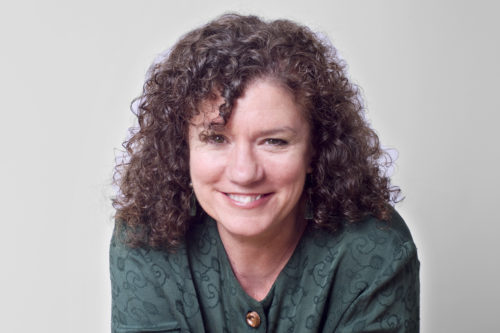
As someone who directed a program in narrative journalism at Harvard, and organized conferences on the subject, you’d think I’d prefer “narrative journalism.” But that term makes me cringe. The word "narrative"' represents everything this form of writing is not supposed to be. "Narrative" smacks of academia. It’s abstract. It’s an example of people choosing a high-falutin' word when a more straightforward one exists: storytelling.
And yet the experience or opinion of the narrator is central to the kind of work I’m contemplating, so there’s one thing to be said for the term. Such work doesn’t strive for the homogenized “objective” voice of a newspaper or newscast; even when it’s written in the third person, the assured voice of the storyteller is always there.
Does the word "journalism" need to be part of the term? That acknowledges that the writers are reporting on people and events outside themselves, and that they subscribe to certain ethical ideas (not making up quotes, being present at a scene they are sketching, resisting composites or reconstructions, confirming facts with multiple sources). Journalism suggests a paramount concern with factual truth, and typically confers a close connection to news.
Many fine examples don’t suggest “news” at all, though, like memoir and arts reviews and Op-Eds and travelogues. Such pieces are concerned with emotional truth as well as factual truth, but they may rely on extensive research and reporting, so that the writer can pull from different sources to develop the layers of a story. They also require time — time to dig deep and think deep, to try things one way then another, to rewrite and rewrite again, to deliberate with an editor over choices.
Some authors do the deep reporting, then depart from strict facts (and therefore from journalism) — Josh Neufeld in "A.D.: New Orleans after the Deluge," for example, and Jeannette Walls with "Half Broke Horses." This tradition of blurring fiction and nonfiction includes novelists whose historical research makes their fiction come alive, like David Guterson (Snow Falling on Cedars), John Steinbeck (whose journalism informed The Grapes of Wrath), and Mark Twain (whose reporting set up his satire). In film, Kathryn Bigelow in "The Hurt Locker," set in Iraq and released in 2009, uses a forensic style that aligns it with documentaries or biopics; Ava DuVernay retells true stories through searing feature films like her 2019 series "When They See Us," which chronicles five black and brown teenagers — the Central Park Five — who were manipulated into falsely confessing to a brutal rape. As long as we’re casting the net this wide, let’s not forget Shakespeare, whose history plays were based on the lives of English kings and used events like The Wars of the Roses as departure points.
Borrowing from other writing forms
But that takes us far from the kind of nonfiction dramas I’m talking about: true stories that involve cross-fertilization — among genres and maybe even media. I’m interested in reported prose that borrows from the traditions of poetry, fiction, and, yes, cinema.
In literary nonfiction, an article is conceived as a story, not as an inverted pyramid. (The classic structure of news journalism tells the reader in the first paragraph who, what, when, where, and maybe why, and then organizes the evidence in descending order of importance.) A story is a graceful line rather than a staggered inverted pyramid; it has an arc, a beginning-middle-end, a graceful spine with limbs attached in just the right places.
Without a central storyline, there is no story. But many other literary techniques are involved in this kind of storytelling, which is why it crosses genres, pulling from Shakespearean tragedy, modern pulp fiction, epic tales, Dr. Seuss, poetry-slam winners, and Pulitzer–Prize winners.
These techniques include:
- precisely painted scenes, to put the reader into the story;
- fleshed-out characters to make the reader care about the story;
- not quotes, per se, but dialogue between characters;
- plot, or actions that unfold over time and lead us toward an endpoint;
- paradox, to give the story twists and turns;
- suspense to keep the story taut and thrilling;
- dramatic conflict (between characters, cultural forces, or communities);
- shapely sentences to pull the reader through paragraphs;
- inventive metaphors that surprise us;
- the presence of a narrator, what many call "voice;"
- some sense of relationship to the reader, viewer, or listener, so that there is a connection between storyteller and audience.
Words on the page can also be influenced by other media. Is this a story best told in unadorned columns or in elegant type? Is it best told in print, where a reader can enter the current of the story and be swept along, or online, where the words can be married with graphics in thoughtful ways? Is it best told accompanied by sound and moving images?
Even if a story is told through plain text on the page, it can have a shimmering quality that allows us to experience it as if it were a movie we were watching on a screen. We watch a story unfold before our mind's eyes rather than being told what is happening in exposition.
This all starts with a narrator who acts like an observing camera — we see landscapes, we watch people, we are carried along with the action. (Journalists call one classic technique “a ride-along,” following a subject so closely that the reader feels put into the car; I tried this in a recent profile of a street photographer in Oakland.) It might entail shifting points of view, or deftly changing perspectives between different characters. (Take a look at David Grann’s “Trial by Fire.”) It might be suspenseful as a thriller. (Journalist-historian Adam Hochschild is a master of slow-release structure.) It might mean thinking of film editing when you are devising a structure, creating a tense rhythm by cutting rapidly from one character to another — or in a scene, changing from a bird’s eye view to a close-up. (Watch old Perry Mason TV episodes for inspiration in black and white.)
Study good writing when you read it
Call it cinematic writing, call it narrative journalism, call it creative nonfiction, call it hybrid poetry. Whatever you call it, here is an admittedly random list of works that have blown this writer away:
"Hiroshima," The New Yorker, August 31, 1946, (later published as a book) portrays the bombing of the Japanese city and its grisly aftermath through the telling of the lives and deaths of its inhabitants, focusing tightly on six of them. It is considered a foundational work of narrative journalism, and an unforgettable read, but also an outlier in that it focused less on Allied victory than on the damage it caused.
"The Fire Next Time," Dial Press, 1963, is what happened when novelist James Baldwin decided to chronicle his early life in Harlem and examine the consequences of racial injustice. It consists of two “letters,” written on the occasion of the centennial of the Emancipation Proclamation. It was described by The New York Times Book Review as "sermon, ultimatum, confession, deposition, testament, and chronicle...all presented in searing, brilliant prose.”
“Plant Crimes,” The New Yorker, November 30, 1998. This article was so exquisite it became a book, The Orchid Thief, and was so cinematic it actually became a movie, Adaptation.
"Seabiscuit," Ballantine, March 26, 2002, is a full-length biography of a California racehorse who became one of the sporting world's biggest celebrities in the late 1930s. Author Laura Hillenbrand writes so cinematically (check out her verbs!) that the reader feels like a rider.
"Summer Doorways," Shoemaker & Hoard, August 19, 2005, is one of three memoirs by poet W. S. Merwin. It’s not a hybrid; you’ll find only prose here. But the poetic imagination is unmistakable: “I would have the luck to discover, to glimpse, to touch for a moment, some ancient, measureless way of living, of being in the world, some fabric long taken for granted, never finished yet complete, at once fixed as though it would never change, and evanescent as a work of art, an entire age just before it was gone, like a summer.”
“After Life,” New York Times Magazine, September 25, 2005. The mistress of style, Joan Didion, shows how carefully chosen language and carefully crafted sentences enhance the power of a story. (This is an excerpt from Didion’s book The Year of Magical Thinking.)
“The Peekaboo Paradox,” Washington Post, January 22, 2006. Gene Weingarten is a character sketcher par excellence; his story spirals ever deeper into one person’s biography.
“In a City Under Strain, Ladling Out Fortification,” New York Times, April 26, 2009. Dan Barry finds in the making of soup a clever way to let action unfold over time, and to give the full flavor of a mill town in decline. (One of many Dan Barry stories that show how narrative journalism can work in a newspaper.)
“Waiting for Death, Alone and Unafraid,” Los Angeles Times, April 3, 2009. Thomas Curwen artfully lets his print story be complemented by an audio slideshow. When the subject’s voice can be broadcast on the Web, the need for direct quotations diminishes, freeing the writer to craft an elegy.
“Killer Blue—Baptized by Fire,” the Associated Press, 2008. Produced by Evan Vucci, this is a joint effort by reporters, photographers, and videographers.
“Trial by Fire,” The New Yorker, September 7, 2009. David Grann brings the thrill of pulp fiction to investigative journalism. The shifting perspectives make it a true shades-of-gray story.
"The Warmth of Other Suns," Vintage, October 4, 2011, is an epic rendering of the decades-long migration of black citizens who fled the South for northern and western cities, in search of a better life. “The work took the form of immersion journalism that turned into ethnography,” says author Isabel Wilkerson.
"On Earth We’re Briefly Gorgeous," Penguin Press, June 4, 2019, is a novel written by a poet, and it jumps between past and present to reveal a life told in stanzas. One reviewer describes it unfolding, “like a series of Polaroid flashes in the dark, a collection of memories offered with the inherent unease of someone else’s scrapbook.”
"Unforgetting," Harper, September 1, 2020, and so fresh off the printer it’s brash to include it here, this book’s subtitle (“a memoir of family, migration, gangs, and revolution in the Americas”) suggests the story’s combination of grit, politics, rage, and poetry. Roberto Lovato is a justice-driven journalist and organizer with petty crime, evangelism, and a stint as a professor in his background; the Los Angeles Times calls it a “panoptic personal narrative.”
Constance Hale is a California journalist and the author of six books, including the writing primer Sin and Syntax. Her work has appeared in the New York Times, the LA Times, the Atlantic, Honolulu, Smithsonian, Wired, and many other newspapers and magazines. From 2007-2010 she taught writing at the Nieman Foundation for Journalism, and she directed three conferences during her tenure there.
